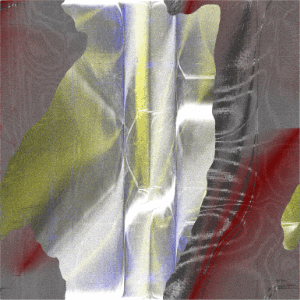
FÄLLT is a collective of people with ideas that fuse minimal aesthetics in digital art forms. This small operation out of Northern Ireland is part of a larger, growing myriad of such labels, publications and artists who are seeking to voice an international investigation of contemporary sound culture – like-minded creators united to speak in many tongues but filtered through similar, smaller networks. I took some time out to speak with curatorial mastermind behind the project, Christopher Murphy, and we found ourselves steeped in everything from limited editions to our favorite musicians to the changing face of Fällt.
::..:::…..:..::….:::::..:::..:::::::……:::…::.:::….::::..:..:::…::…….:::::
TJ NORRIS / IGLOO :: Hey there Christopher! Tell me about the philosophy behind what makes Fällt tick –what is it all about and when was it established?
Christopher Murphy :: Coincidentally, this question arrives at a timely juncture. I recently spent four days with Fällt’s other founding partner, W. Conrad Rontgen, who lives in Brussels. It was the first time we’d ever met face-to-face since Fällt was established. All of our communication throughout the last decade has been 100% by modem.
It was interesting to meet formally and it altered our working relationship fundamentally I think. When we weren’t spending a small fortune on CDs and DVDs in Lebonheur (a fantastic CD shop in Brussels) we were discussing Fällt’s past/present/future into the small hours over well-stocked glasses of Chivas Regal.

Before moving into publishing, Conrad worked with the government on a number of projects, notably several related to the development of encryption algorithms, so he has a very analytical and logical mind. The ways we both approach problems are quite different and, I think, complement each other quite well. I think the meeting has altered several aspects of Fällt, which should soon become apparent.
We established Fällt informally over a decade ago, but it really started to come into focus when we established our website in 1999. The website went live on 31 December, 1999 – a date we didn’t choose by accident. The cusp of a new millennium seemed like a good time.
IGLOO :: All great ideas should continue to find a state of metamorphosis, but that sounds like a cliff hanger –can you give me a few clues as to the re-emerging, changing face of your operation?
CM :: 2002 and 2003 might have appeared to have been quiet years for Fällt, but this was largely due to the fact that our focus had shifted from the production and release of CDs towards the creation of installations. We were commissioned to create Invisible Cities which has now shown in four cities internationally so inevitably our CD production fell behind.
This was also in part due to pressure of work commitments. I have, however, recently been appointed as a university lecturer, teaching in Belfast – one of the benefits of this is time for research. This is slowly beginning to have an effect.
2004 is seeing Fällt – as a record label – re-emerging. We’ve released three CDs in 2004 already: Chirstopher Willits’ Pollen, Komet’s Arc, Live @ SWR Freiburg and Hard Sleeper’s Land, Live @ Rausch; and we’re just sending out promotional copies of Tu m’s Pop Involved [Version 3.0] and Ian Andrews’ Ceremonial, both in the Ferric Series.
si-cut.db’s Offices at Night is also currently at the plant and will be released shortly. It’s been re-thought and is now a three volume work featuring versions which will be available for free download later in 2004. We also have the next two releases in the Fällt Live Series lined up by Taylor Deupree and Tu m’. So all in all it looks set to be a busy year musically.
IGLOO :: Is Fällt a collective?
CM :: Absolutely. Our artists now number close to 100, across the decade we’ve been creating works and they’re based internationally. I often refer to artists involved with Fällt as being part of the Fällt family. It’s an informal and friendly network. We all assist each other and there’s a strong sense of community.
IGLOO :: How are things like in Northern Ireland? Who’s ‘hot’ in the world of experimental electronica in Ireland these days?
CM :: I honestly can’t say. Most of the people we work with are from outside Ireland. Having said that one artist we’ve recently become involved with closer to home is Peter Maybury based in Dublin. Maybury is ‘Hard Sleeper’ (with a recent release in the Fällt Live Series), he’s a fantastic designer and typographer and I’d always admired his design. It was a pleasure to work with him.
Donnacha Costello is also based in the South. I’ve always appreciated his work although we’ve never worked with him on Fällt, it would be a pleasure to collaborate with him.
IGLOO :: What is your role with the label?
CM :: I’m involved in a broad range of activities: I handle all sorts of business-related activities, often trying to ensure there’s enough funding to cover the different projects we’re involved in; I commission works for release on CD (usually in conjunction with Conrad); I curate most of the installations we’ve created; and I edit %Array.
I’m also one of the members of the Fehler collective so work on all the label’s design-related activities including maintaining the website. It’s hard to juggle everything, but we’re what I’d call a “managed loss-making business” so we can’t afford to outsource anything.
IGLOO :: In terms of the background operations, who else is involved in the process of putting the music out to the people?

CM :: My partner W. Conrad Röntgen and I co-operate on all musical decisions. I run everything past him and he has a power of veto on all proposed projects.
IGLOO :: I realize that most of the releases are limited editions – why is that and how do you determine the size of the edition? In this way do you feel that there is a significant connection to the fine arts, in that usually there are editions of prints of photographs? How does that play a role at Fällt?
CM :: The editions are partly a reference to the world of fine art, I genuinely believe that the musicians/artists we work with are as accomplished (if not more so) than many other artists within contemporary practice. This applies in particular to the musicians and sound artists we’re working with who might not often be referred to as artists.
In most cases they’re at the edge exploring and developing the worlds of music and sound, challenging established norms and pushing into new territories.
Recently we’ve reduced the size of the editions – they’re now largely limited to only 500 copies. This is simply a pragmatic decision. We’d rather create 500 CDs, send out 300 promotional copies and sell the balance of 200 so that we can break even than press more and run the risk of making a loss.
Obviously there are certain CDs that probably might sell more, but we’re by and large happy with the numbers at present.
We send out a lot of promotional copies and give away literally hundreds when we’re overseas showing work. We often view Fällt as a form of cultural institute or educational and promotional agency. It’s a means of giving artists wider exposure and, in some cases, giving them their first release, putting them on a ladder to – hopefully – more recognition later, on other labels.
As an aside: I’m a dreadful businessman.
IGLOO :: You make a curious point here. I really appreciate the limited audience, artistic promotional aspects of the way you do business. You are giving a voice to the process, to new work. So how then does Fällt differ from a non-profit organization?
CM :: I don’t think Fällt does differ from a non-profit organization (except for the fact that we are not, as yet, an officially registered non-profit organization). Fällt is, however, run on an entirely non-profit basis. We re-invest any profits from commercially distributed releases to fund ongoing and future (loss-making) projects, for example, installations.
I often use the term managed loss-making to describe the business.
If we were to concentrate solely on releasing CDs we might be able to make money, but our interest in installations and other non profit-making projects tend to absorb any profit we might make on commercially successful releases.
IGLOO :: Well, to that I certainly lift my glass high! There are not too many like you out there, willing to risk everything for art. Thank you.
How has the Internet played a role in the fashioning of new sound technologies and how has it in any way defeated its purpose to act as an international communications medium? How has this, if at all, affected the work or mission of Fällt?
CM :: The Internet has altered our communication processes fundamentally. Ten years ago it became possible for a widespread audience (beyond the confines of government or academia) to communicate across boundaries and borders. This revolutionized the way we exchanged information; without the Internet there would be no Fällt.
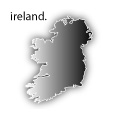
We only work with four artists locally in Ireland and we only began to work with them in 2003. Previous to that everyone we worked with was overseas. 99% of our work is done remotely and we have no problems, in fact, in many cases it makes communications easier.
In relation to the creation and shaping of sound the Internet has also revolutionized the way I personally work as a musician. With broadband it’s now possible to swap files much more easily and also, crucially, exchange larger files. This is altering the kinds of sounds artists are exchanging and consequently having an impact on the works produced.
I still like to work with extremely small sound files and loops however. For most of audio work I’m still using SimpleText.
IGLOO :: Often what you discover becomes someone else’s find, and with a limited release you help create a secret listening society. Any thoughts?
CM :: If an artist we’ve worked with goes on to release work on other labels we’re delighted. Our artists do, however, tend to be very loyal. We often ask them to assist us on guaranteed loss-making and non fee-paying projects and they more often than not deliver over and above our expectations. Perhaps this is a form of payback.
With regards to a secret listening society, profit doesn’t motivate us so we tend to keep editions small, no other reason. I’d prefer to use the term close friends than secret listening society. We look on the people who buy our releases as our friends and supporters.
IGLOO :: Can you describe the Invisible Cities project a bit and tell me how this will continue to develop and/or if there are similar future projects planned?
CM :: Invisible Cities really has been an unexpected success. When we were first commissioned to create a piece fusing sound and the city, we envisaged a piece that would exhibit once and be dismantled. Coincidentally a number of British Council Arts Officers from around the world attended the opening night and asked if it might be re-built as a touring show.
We were extremely lucky to be granted assistance with our work by the British Council and, with their help, we’ve now shown Invisible Cities on three occasions: in Belfast, Malta and Lisbon. The piece will travel this year to Naples, Milan and Brussels and is planned to show in Paris in early 2005.
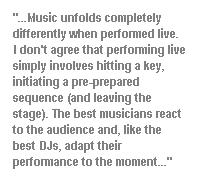
The piece is constantly evolving. Every time we visit a city to exhibit the work we commission a new sound portrait for that city. The result is a growing bank of sound portraits of the world’s cities. We make these recordings available to download for free through the website, it’s one of the site’s most popular sections.
IGLOO :: I am thrilled that Fällt decided to release a live series – it’s a true compliment to anyone’s improvisational music collection. How do you go about choosing artists for this series and what role does the actual location have to do with the recordings, if any?
CM :: Increasingly we’re sent recordings of live performances. The series began after Stephan Mathieu gave me a recording of one of his performances at A-Musik. The first time I heard it I honestly didn’t like it, but after a week of listening it grew on me so much that I approached Stephan with the idea for the Fällt Live Series.
Subsequent recordings by Warmdesk, Komet and Hard Sleeper have all proved equally successful. We have future releases lined up in the series by Taylor Deupree, Tu m’ and Richard Chartier.
The locations are interesting. We’re not limiting the series to live performances in front of an audience – i.e. the releases don’t necessarily have to be concert situations in traditional performance spaces.
The Warmdesk recording was a live recording on air; and the Komet recording took place at SWR Freiburg’s ‘Experimentalstudio’, which has a prestigious pedigree with Stockhausen, Nono, and Boulez having worked there in the past.
IGLOO :: That’s a great way to look at the “live experience” – it is not always cordoned off to a certain place deemed right for a performance like a concert hall. I also appreciate that feeling of a piece that doesn’t appeal right away, and has a time-released effect – there are a few artists who do that to my ears almost every time (and funny enough, Mathieu is actually one of them). How challenging is electronic music when performed live?
CM :: Music unfolds completely differently when performed live. I don’t agree that performing live simply involves hitting a key, initiating a pre-prepared sequence (and leaving the stage). The best musicians react to the audience and, like the best DJs, adapt their performance to the moment.
Recent memorable performances I’ve witnessed include: Pole live in Gothenburg – his gestures and movements underlined his virtuosity; Stephan Mathieu live in Belfast – a slowly evolving, very moving set which closed with the gentle sound of his daughter playing at home in the Mathieu garden; and Mikael Stavostrand in Belfast – a set featuring some new material forthcoming on Fällt in 2004 which was I enjoyed because of my familiarity with the pieces.
IGLOO :: I will keep an ear out for that one – I have always found his sound to be complex listening. Do you feel there are exciting performers to watch?
CM :: As a designer, I find some of my favorite performers are those who work with visuals and consider a visual equivalent to their performance.
Both the Mathieu and Stavostrand performances in Belfast recently featured visuals by Alorenz. Angela’s visuals were, simply, stunning. They fitted the music perfectly and we’ve since begun discussing printing an edition based on them, perhaps to accompany a future CD release.
IGLOO :: That reminds me of shows I have seen by Stars of the Lid and Godspeed You Black Emperor, not to mention Pita and Matmos (even though I just did) – where the visual spectacle is a critical part of the experience. Does the word ‘microsound’ mean anything to you?

CM :: I think it’s a useful term, it neatly encapsulates a number of different strands of recent musical exploration.
IGLOO :: MP3 Format. Can you discuss the sensibility in hi-fidelity vs. the practice of hunkering down at your PC. Talk about this practice and how it may have changed the experience of listening to music.
CM :: The reality is that I often end up listening to music on my PowerBook and/or iPod. I spend increasing quantities of time traveling and the ability to take a significant proportion of my collection with me on my PowerBook and iPod helps.
I find that Apple’s iTunes software has altered my listening habits considerably, meaning I often find myself listening to tracks unexpectedly and wondering, “What’s that?” I’m also using the iPod’s ‘Music Quiz’ to randomly uncover music I haven’t heard for a while.
Given the choice, however, I’d still prefer to listen to the original CDs or vinyl in my studio, not least because I can then spend some time exploring the packaging.
IGLOO :: Totally right on –I love the sensuality of unfolding pages, the papers used, the text imprints, the inks, even the smell of new work when its opened. The other senses play an essential part to the process of discovering something initially – maybe it even changes the entire tone before I even pop it in the player? Does the MP3 make music disposable?
CM :: I think that MP3s and the digitization of music do pose significant problems. I’ve lost two hard drives over the last three years and, despite my best intentions when it comes to archiving, I’ve lost numerous files. I see my CDs – indeed all my analogue media – as perfect archives.
I also maintain a certain sense of nostalgia for the wide-open expanses of the gatefold sleeve. As we shift progressively towards digital spaces – which also have considerable potential to cover wide-open spaces – I wonder how designers will respond to the digital opportunities open to them.
I haven’t seen anything yet that’s captured my imagination over the last few years. Equally worrying is the fact that release-specific websites have a tendency to disappear without trace, or worse, suffer from perpetual upgrade syndrome.
This instability concerns me. What will the artwork and design of the future be and how long will it last as computers, operating systems and software are relentlessly upgraded year on year, month on month?
IGLOO :: With few exceptions, some in the world of Flash (Ritchie Hawtin’s site, Sub Rosa’s searchable online MP3’s, sites by Chicks on Speed/DAT Politics, Xela, Bjork…). But this also is part of the “stage” – outside of the sense of ownership of a personal collection, a historical, collected archive. More something that is outside of the audience. I concur that digital design has many shortcomings in the way it addresses the overall process of engaging us too far. Of course everyone has heard the RIAA’s concerns about lost revenues and a changing music market – and when it comes to independents, especially those producing ‘fringe’ music – the effect is completely different. Do you care to respond to this?
CM :: I’m in complete disagreement with the RIAA, especially the way they have handled the whole shift from analogue to digital.
Since we had broadband installed in our studio last year I’ve downloaded hundreds of MP3s, hand-in-hand with that I know my spending on CDs has increased massively (I’m reminded of this every month when my Visa bill arrives!).
The ability to download MP3s and listen to new music has opened up wide new musical avenues for me and I’m sure I’m not alone. Our customers by and large love music, they want to support the artists who’s work they appreciate.
Every year we give away the entire invalidObject Series (24 x 3″ CD Boxed Set) for free in MP3 format – six hours of music. We still sell the CDs though, because our customers appreciate the quality of the design and the packaging. This is the challenge that faces the music industry in the digital age. How do we make physical purchases compelling and value-added?
Very few of the big five labels seem to grasp this, presumably because they equate value-added with a drop in fat profit margins.
IGLOO :: I can do without the big five for the most part, really. I mean – look at what recently happened with EFA as an example –the corporate shift is dangerous when it infuses with the livelihood of artists. There is something about the process of research and discovery that goes deep into the psyche of establishing personal taste and a sound vision.
Offering sound for free, I think, is a selfless and honorable act. Although, we get back into the circle of commercial ventures, profit and the ability to afford and carry on to the very next project. I think sustaining the artistic market in the 21st Century will be one of our biggest challenges if we care about the freedom of creativity and cultural effectiveness. Care to comment?
CM :: I think an alternative artistic market is emerging in the early 21st Century that is running contrary to the established art market practices of the late 20th Century. It’s based on principles of freedom of information (in the widest sense of the word information) and a willingness to share works, often for little or no financial return.
There are a growing number of artists – across specialisms – who find the practices of the insider-dealing art market offensive and who are reacting to that by adopting a more generous philosophy. I welcome that.
IGLOO :: Very keen insight, though an artist does want to turn an earnest buck and hopefully not sell out in the process, and wouldn’t it be great if we could do that without having to pose pretty for what you have just described to apropos? That is the ultimate rhetorical question. Not to digress, could you tell me a little bit about your personal interests and what you do when you are free? Tell me a bit about Fehler.
CM :: I work as a lecturer teaching design and fine art. When I’m not teaching I’m working for Fällt. My spare time (of which there isn’t much!) is usually spent developing related Fehler works.
Fehler is a loose collective comprising myself, Otaku Yakuza and Christophe Behrens (two artists we’ve worked with a lot at Fällt). The projects we’re working on at present are largely screen-based. Simple resources for computers. We have a CD coming out in the Ferric Series featuring ten audio tracks and a data partition of past and new Fehler works. We’re focusing on this CD just now.
IGLOO :: Are there artists that you would like to work with?
CM :: We have so many ideas for projects with our existing pool of artists that it’s often difficult to find the time to fit new artists in. Having said that we do listen to a lot of the demo’s we’re sent and they always offer new suggestions.
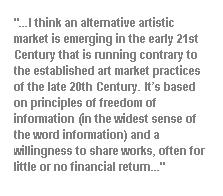
I’d very much like to do something else with Akira Rabelais, I respect his work and his idiosyncratic vision and use his software a great deal. I’d also like to work on a follow up to Assembler with Pimmon, a good friend. It would also be a pleasure to work on something specific with Alejandra and Aeron. Finally perhaps some form of collaboration with Tina Frank.
Having said that there are the obvious artists I admire and would like to work with further: Alku, I admire their work greatly; 3.14 (we’re hoping to re-release a work by them later this year); the list could go on.
IGLOO :: The list –yes, yes –art is alive to thrive. Can you name some breakthrough up-and-coming artists that we should watch for?
CM :: I can think of quite a few, but they tend to be ones that have already begun to break. They include: Tu m’ and Ian Andrews (both of whom are on the Ferric Burn to Order Series).
Ian Andrews just sent me two new CDs out now on Pneuma, which are excellent. We’re hoping to work with him on a full Fällt release later this year. Tu m’ will hopefully be working with us on an album.
IGLOO :: What is next up on Fällt?
CM :: si-cut.db’s Offices at Night has now become a three volume set of CDs, Volume I is at the plant just now (Volumes II and III will be versions of Volume I).
We’re also discussing a silkscreen project with Alorenz (possibly a Fehler collaboration) and a release by Mikael Stavostrand. We have CDs out soon by Taylor Deupree and Tu m’ in the Fällt Live Series.
Invisible Cities continues to tour and we have a collaborative show forthcoming in Malta with Invisible Cities contributor Vince Briffa dealing with old media.
Finally we’re working on a major retrospective/commemorative boxed set of Fällt board member Anton van Leewenhoek’s works. This will be a 3 CD boxed set with a limited edition, numbered multiple and will cover his work between 1984 and 1999. Anton was a supporter of Fällt early in his career – a close friend and advisor.
We fell in love with his early tape experiments and, after we released Botany, he forwarded us a box of superb recordings spanning 15 years of audio experimentation and development. The first CD in the set will focus on his early works with tape and computer (dating back to 1984); the second CD features his working processes, sketches and alternative takes for Botany; and the final CD will feature (un)finished digital variations of his early works.
It’s a project we’ve planned for some time and will probably be released in 2005. We’d like to spend some time on it.
2004 should see a return to a regular release schedule now that I’ve reduced my lecturing load. All in all it’s looking exciting.
IGLOO :: Well – it sounds as if you have got your work cut out for you and I look forward to watching as Fällt continues to emerge, develop, change and spark new interest in the field of multimedia exploration. You get the final word.
CM :: My final word would be thanks: to all the artists who have supported us over the years; to all our friends and supporters around the world who, through buying Fällt’s CD releases, are helping to realize other projects; to our distributors who also support us and distribute our CDs; and finally to the galleries and arts organizations who continue to support us, in particular to Colette Norwood, British Council of N. Ireland for determinedly supporting Invisible Cities and Ian Davidson, Arts Council of N. Ireland for his ongoing support.
::..:::…..:..::….:::::..:::..:::::::……:::…::.:::….::::..:..:::…::…….:::::






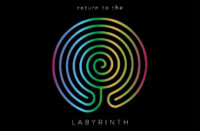


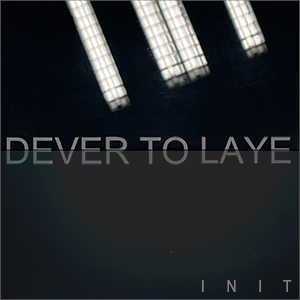




![Hasbeen :: Bunker Symphonies II (Clean Error) — [concise]](https://igloomag.com/wp/wp-content/uploads/2025/04/hasbeen-bunker-symphonies-ii_feat-75x75.jpg)
![Extrawelt :: AE-13 (Adepta Editions) — [concise]](https://igloomag.com/wp/wp-content/uploads/2025/04/extrawelt-ae-13_v_feat-75x75.jpg)
![Beyond the Black Hole :: Protonic Flux EP (Nebleena) — [concise]](https://igloomag.com/wp/wp-content/uploads/2025/04/beyond-the-black-hole-protonic-flux_feat-75x75.jpg)
![H. Ruine, Mikhail Kireev :: Imagined / Awakenings (Mestnost) — [concise]](https://igloomag.com/wp/wp-content/uploads/2025/04/h-ruine-mikhail-kireev-imagined-awakenings_feat2-75x75.jpg)


![Squaric :: 808 [Remixes] (Diffuse Reality) — [concise]](https://igloomag.com/wp/wp-content/uploads/2025/04/squaric-808-remixes_feat-75x75.jpg)
